The courtyard of the Archaeology Museum hosts Christian history. Often unlabeled but with observation, many pillars and capitals give us insight to some Cafe Garden monuments.
Cafe Garden Monuments
I have put together a short walking tour of this area if this will help.
When entering the Cafe Garden with the main building behind you, you will see a cross bearing capital on top of a large pillar, marking the entrance to one of the churches in Istanbul. In Byzantine history, many decorative crosses have been displayed in other capitals, but this one is quite simple. Unfortunately, we do not know which church it belongs to.
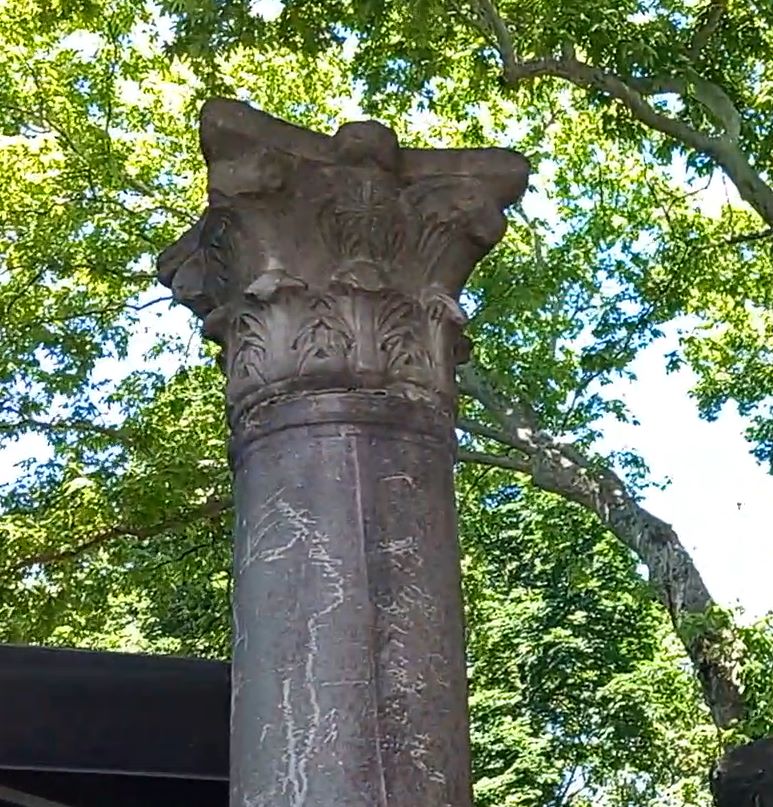
The video below, gives a walk through the right side of the cafe garden where various cross carved capitals sit upon pillars.
Garden Section near to the Cafe
Many monuments on the middle walkway between the cafe and terrace give insights into the city’s history. The sizable purple square-shaped pillar in the middle was from the Justinian period. Most likely, it is a prominent pillar of importance.
Over the Terrace Monument
The terrace overlooks a graveyard of monuments, with a few hidden crosses scattered among the items.
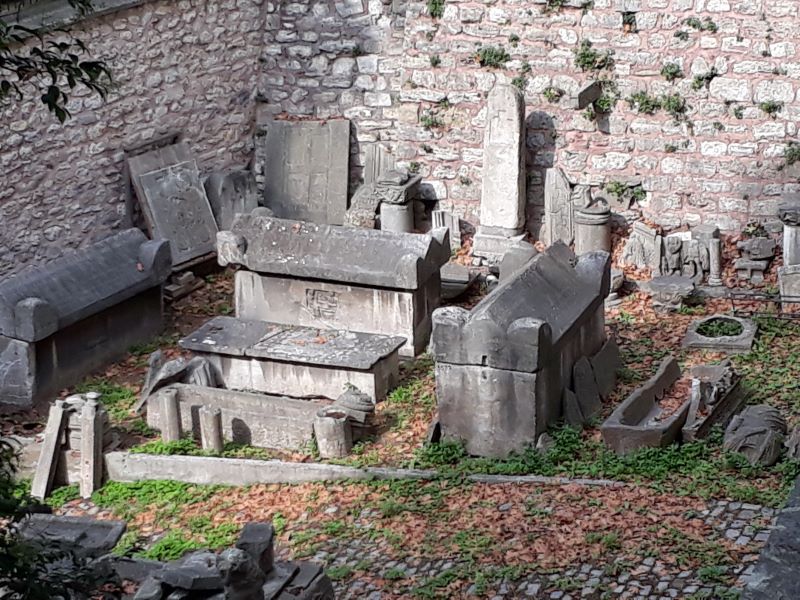
On the far right in the corner is a cross panel that appears to be four feet tall. A large cross like this would appear in the entry way or on a wall panel within the church. On the left side of this panel lays a tomb with what appears to be a cross on its side.
Below the terrace sits a broken panel of three crosses, which was most likely once displayed in a church or a tomb.
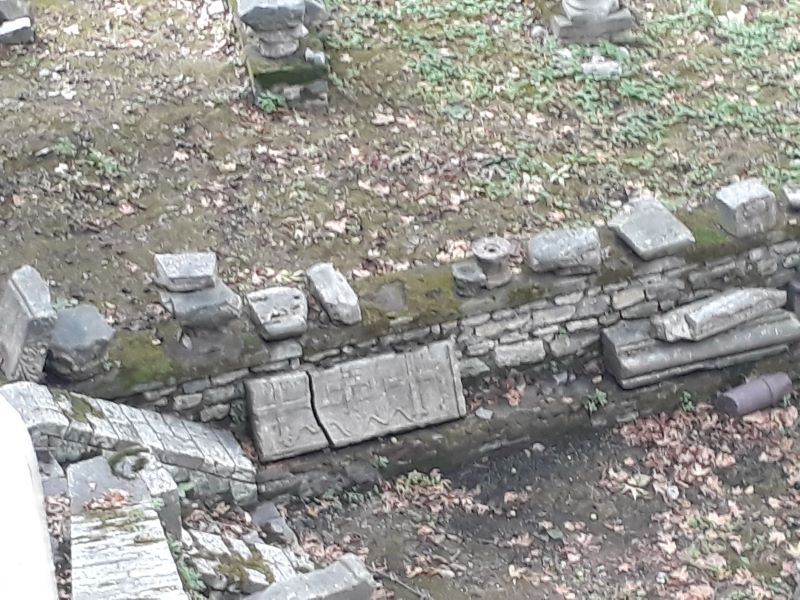
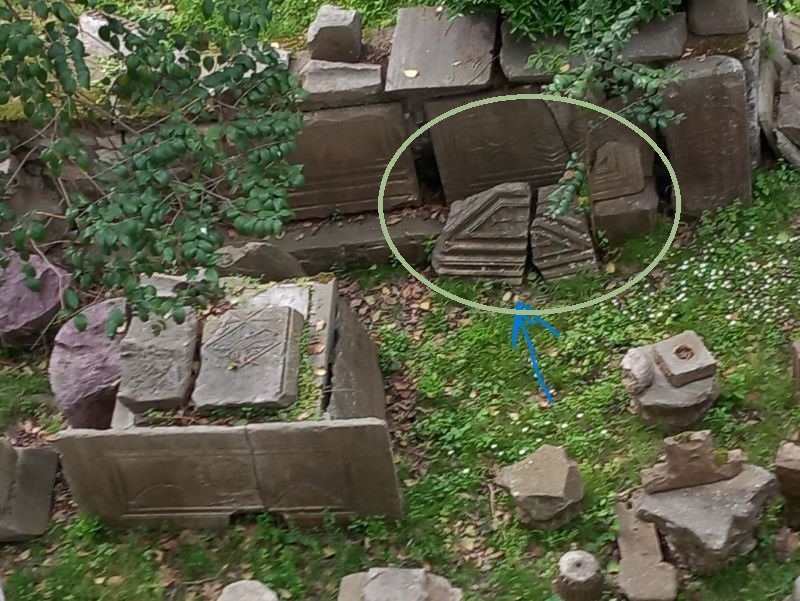
A broken pulpit, centered below a tree, is positioned. The broken pieces’ angles align with the stairway up where the Scriptures were read. This pulpit is similar to the one in the Hagia Sophia courtyard, yet smaller.
Also, a decorative cross is leaning against a square platform below, which may require one to stand on the right side of the terrace. It is most likely a panel display in a former church.
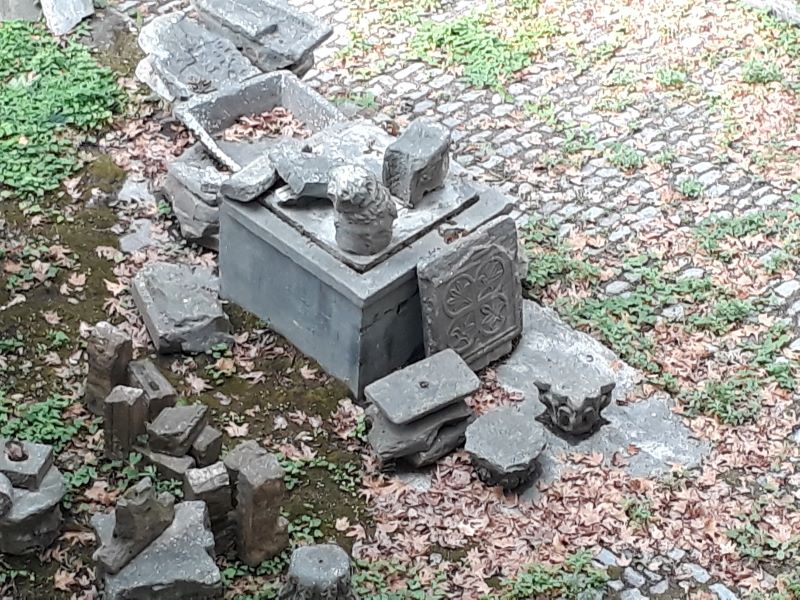
On the Back Wall of the Cafe
The city’s Christian history is mainly Byzantine, but the Latins from Italy, mainly from Venice, controlled the city from 1204 to 1261 AD. During that time, their coat of arms became prominent. On display on the back wall is a marble carving from the Latin rule. The plaque says that the panel came from the Roman Catholic church that is now the Arab Mosque in Karakoy (near Taksim). That church was built in 1325.
What have you noticed in your observations? The Byzantines are known for their later icons, but these displayed crosses signify what they truly cherished—the cross. They placed the cross on entryways, side panels, ceilings, and on their graves. They desired to walk in the way of the cross and trusted in Christ’s death for their salvation.
Next, we want to observe the Byzantine ruins over the garden terrace.

[…] have other walking tours that include Istanbul and Antalya, Turkiye. Please recommend this tour on your social media. […]